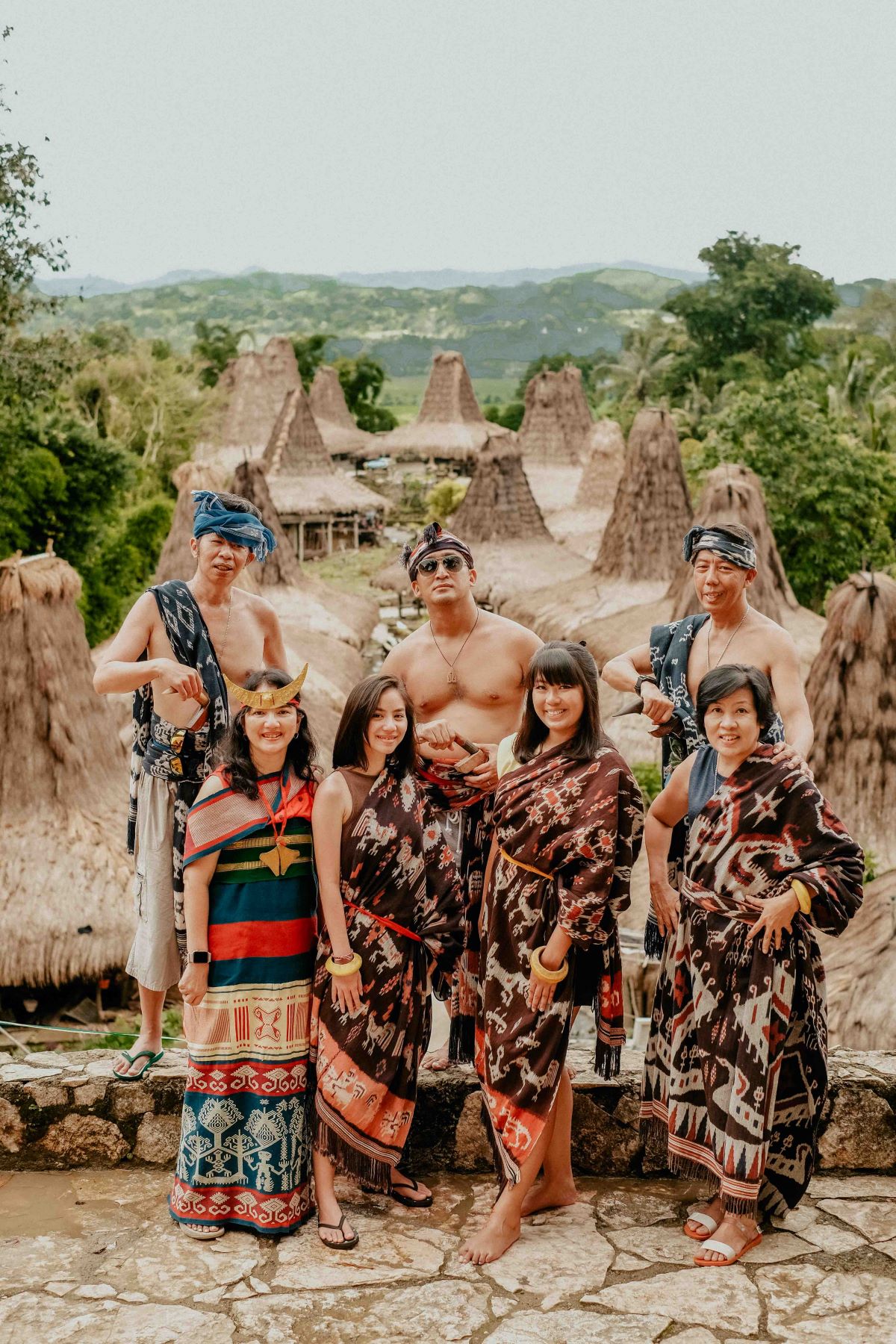Tenun Ikat, Sumba Island Traditional Textiles
The Ikat textiles from Sumba island
Ikat textiles were mostly made in East Sumba’s coastal districts. Sumba’s traditional dress includes flat woven cloths known as hinggi worn by males and tube skirts known as lau pahudu worn by women. Ikat is used to create hinggi. From small villages in remote island such as Sumba, these days, ikat has been recognized around the world, and manufactured from many countries in Asia. Many of these factories are still in operation today.
The Ikat weaving technique
The term ikat comes from the Malay/Indonesian verb, mengikat, meaning ‘to tie or bind’. In ikat the pattern is created on the textile threads using a resist dyeing technique before the textile is woven. This is what makes ikat different from other dyeing techniques since it is only dyed after weaving. The thread that will be used to weave the cloth is carefully wrapped around a frame. The threads are then securely wrapped in portions that match to the intended design in groups or bundles. When the yarn is immersed in the dye bath, the bonded portions resist the dye and retain their original colour.
The thread is cleaned and dried after dyeing, and the bindings are removed to display the designs on a coloured backdrop. The design is exposed completely as the material is woven.
The hinggi
The hinggi is a huge piece of cloth made up of two narrow lengths sewn together. Fringed at each end, the material is ornamented with horizontal bands of figurative motifs that mirror one other on either side of a center band. Hinggi was used by men as a pair of cloths, a hip wrapping, and a mantle. Originally, the textiles were made in matching pairs and worn together. Commoners wore blue and white, whereas red dye showed that the fabric had been manufactured and worn by royalty. The secret of colouring with red dye, which derived from the bark and roots of a plant called morinda citrifolia, was kept by noble ladies.


Ikat textile motifs
The majority of Sumbanese textiles feature naturalistic imagery that depicts aspects of daily life as well as past customs. The horses depicted on this fabric, for example, were a prized status symbol on the island and were used for transportation and deer hunting by the royalty. The term “marine shrimp” refers to the abundance of sea life that surrounds the island. They alternate with skull trees, which recall the practice of hanging captured soldiers’ heads on a specially cut tree.
Coastal peoples exposed to influences brought by commerce with India, China, and the Arab world, as well as the Spanish, Portuguese, and Dutch, developed Hinggi. The blue anchors in the third band are an example of Sumbanese textile designs taken from Dutch coins, flags, and banners.
Weaving fabric into daily lives
Textiles are a significant medium of creative expression across Asia, but they also identify a person in a range of aspects, including social position, money, family, clan or tribal identification, and gender. Textiles are made by women on the Indonesian island of Sumba for rituals commemorating significant events in a person’s or society’s existence, for everyday usage as clothing and house textiles, or to meet the needs of the tourism industry.
At major rites of passage events such as birth, coming of age, marriages, and funerals, as well as celebrations related with nature, such as those conducted to celebrate the harvest and planting of food crops, large quantities of textiles are exchanged. Textiles were generally regarded ‘female’ things in these extensive ceremonial exchanges throughout the area, whereas metal and wood were considered comparable ‘male’ items. Traditionally, only high-ranking women were allowed to weave delicate textiles such as hinggi, but now any woman can weave this sort of cloth.


Sumba’s Tenun Ikat Traditional Handwoven Fabric Festival
Sumba, the exotic island, is bathed in vibrant festivities. This is the Tenun Ikat Festival on Sumba, where the focus is on one of the island’s most prized unique creations, the Tenun Ikat traditional handwoven textiles, which will be exhibited throughout the month of July in Tambolaka.






